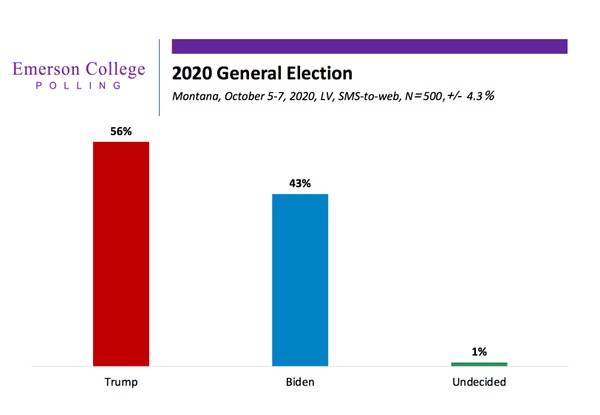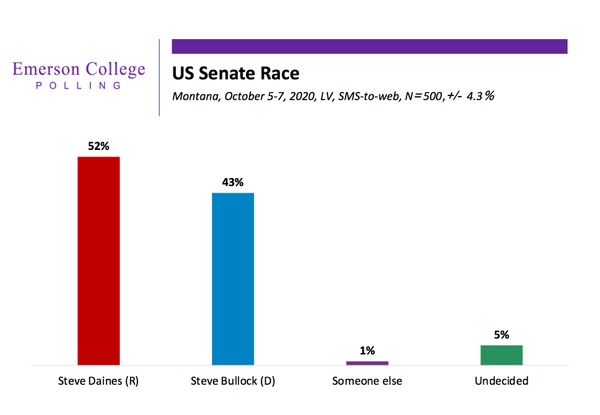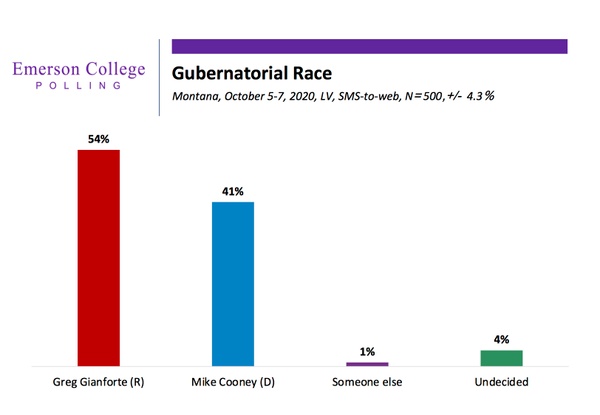The latest Emerson College poll of Montana voters finds President Trump with a 13 point lead in the state over former Vice President Joe Biden, 56% to 43%. One percent of voters are undecided. President Trump has expanded his lead since the last Emerson poll of Montana in August, when he led by 11 points in the state, and five percent of voters were undecided.
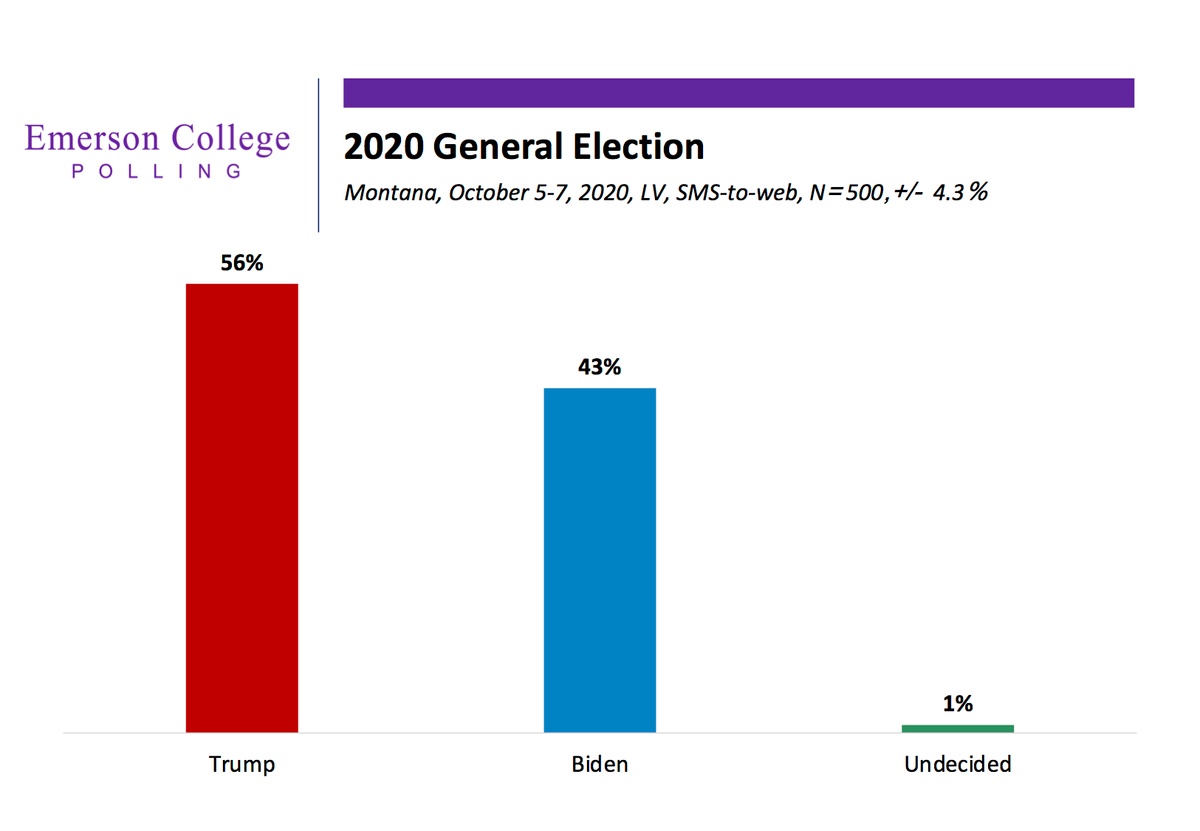
Spencer Kimball, Director of Emerson College Polling notes that “Montana looks about the same as it did at this time in the 2016 race, we will be looking to see if there is a late break in the state which last time went for Trump giving him a 20 point win”.
Continuing the trend seen around the country, voters who plan to vote by mail are strongly breaking for Biden, 60% to 39%, while those who plan to vote on election day are heavily planning to vote for Trump, 81% to 19%.
Males are breaking for President Trump 60% to 39%, while females are also slightly breaking for the President, 52% to 47%. Independent voters are evenly split, with 49% supporting Trump and 49% supporting Biden.
President Trump’s job approval in the state is at 55% approval and 44% disapproval, with his approval increasing three points among Montana voters since August. Among Independent voters, his approval has gone up from 38% approval to 45% approval since August, a 7-point swing.
The US Senate race is slightly tighter than the presidential contest, as incumbent Republican Steve Daines leads Democratic Governor Steve Bullock by 9 points. Five percent of voters remain undecided. Senator Daines has also expanded his lead since August, when he led the Senate race by six points.
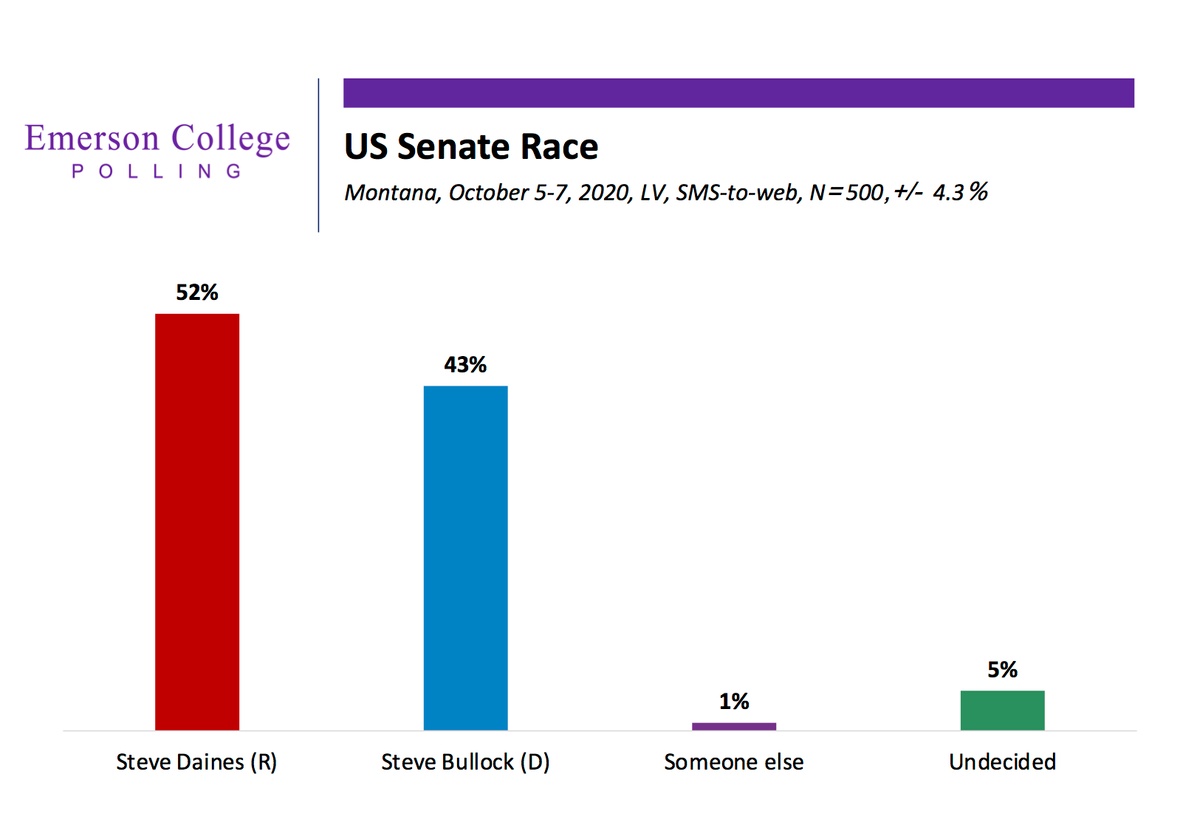
In the Governor race, Republican Greg Gianforte leads Democrat Mike Cooney by 13 points, 54% to 41%. Four percent are undecided. In August, Gianforte led by nine points, and seven percent were undecided.
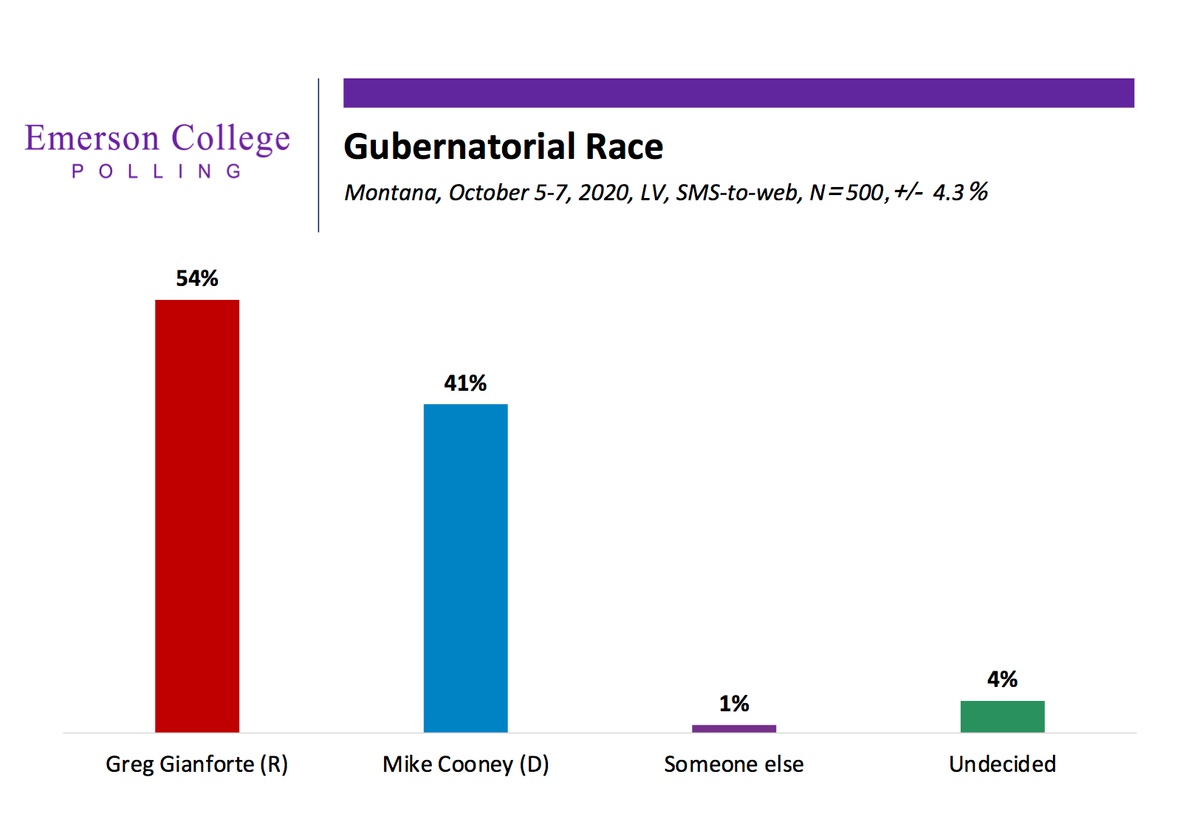
Caller ID
The Montana Emerson College poll was conducted October 5-7, 2020. The sample consisted of likely registered voters, n=500, with a Credibility Interval (CI) similar to a poll’s margin of error (MOE) of +/- 4.3 percentage points. The data sets were weighted by gender, age, and education based on 2016 voter turnout modeling. It is important to remember that subsets based on gender, age, party breakdown, ethnicity, and region carry with them higher margins of error, as the sample size is reduced. Data was collected using SMS-to-web texting (n=500).

